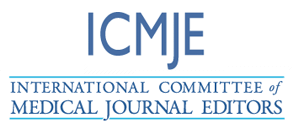Management of Posterior Tibial Tendon Dysfunction in Neglected Navicular Accessory Fracture: A Case Report
DOI:
https://doi.org/10.55677/IJCSMR/V3I6-02/2023Keywords:
AAFD, Disfunction, Insufficiency, Posterior Tibialis Tendon.Abstract
Introduction: Posterior tibialis tendon dysfunction (PTTD) is the result cause by degeneration or inflammation of the tendon with subsequent functional impairment secondary to elongation or rupture. Degeneration may be initiated by a traumatic incident but more often is insidious and without an identifiable antecedent trauma. Treatment of PTTD is based on an accurate staging of the disease with both nonsurgical and surgical treatments designed to correct the abnormalities particular to that stage of disease and to prevent progression to the next stage.
Methods: We present a case of a 68-year-old female who had chronic medial ankle pain after slipped and feel down from the stairs with foot flex outward. This patient diagnosed with moderate Acquired Flat Foot Deformity cause by stage II PTTD that associated with history of trauma that previously cause a fracture on the accessory navicular bone. The patient was planned to perform surgical management by doing calcaneal osteotomy and tendon repair of the posterior tibialis tendon by a medial approach incision on the left foot.
Result: We reported an evaluation of VAS and AOFAS Midfoot score before operation result are 8/10 and 50/100. Reevaluation of 3 month after surgery, the patient has improvement on VAS and AOFAS Midfoot score reported on 1/10 and 80/100. There is improvement in active range of motions of the left ankle and patient also can perform a single heel rise with her left foot although still have limitation on the duration and distance.
Conclusion: It can be challenging to decide on the best surgery and create a treatment plan based on the deformity's development. For the effective treatment of each individual patient, it is critical to decide the various surgical and conservative treatments. Because of the progressive tendency of this deformity, many people will require surgical intervention.
References
Park S, Lee J, Cho HR, Kim K, Bang YS, Kim YU. The predictive role of the posterior tibial tendon cross-sectional area in early diagnosing posterior tibial tendon dysfunction. Medicine 2020;99:e21823. https://doi.org/10.1097/MD.0000000000021823.
Squires NA, Jeng CL. Posterior Tibial Tendon Dysfunction. Oper Tech Orthop 2006;16:44–52. https://doi.org/10.1053/j.oto.2006.03.002.
Benjamin E. Stein M, Lew C. Schon M. Posterior Tibial Tendon Dysfunction in the Adult- Current Concepts. AAOS Instructional Course Lectures 2015;64:441–50.
Ikpeze TC, Brodell JD, Chen RE, Oh I. Evaluation and Treatment of Posterior Tibialis Tendon Insufficiency in the Elderly Patients. Geriatr Orthop Surg Rehabil 2019;10.
https://doi.org/10.1177/2151459318821461.
Guelfi M, Pantalone A, Mirapeix RM, Vanni D, Usuelli FG, Salini V. Anatomy, pathophysiology and classification of posterior tibial tendon dysfunction. n.d.
Ross MH, Smith MD, Mellor R, Vicenzino B. Exercise for posterior tibial tendon dysfunction: A systematic review of randomised clinical trials and clinical guidelines. BMJ Open Sport Exerc Med 2018;4.
https://doi.org/10.1136/bmjsem-2018 000430.
Olivia Poppen, Patrick Feder, Caleb Gorman. Stage III Posterior Tibial Tendonitis and Dysfunction Leading to Acquired Flat Foot in A 49 Year Old Male. Journal of Contemporary Chiropractic 2021;4:107–11.
Geideman WM, Ohnson E. Posterior Tibial Tendon Dysfunction. vol. 2. 2000.
Wamelink KE. Surgical Management of Posterior Tibial Tendon Dysfunction. Update in Management of Foot and Ankle Disorders, InTech; 2018. https://doi.org/10.5772/intechopen.76233.
Kohls-Gatzoulis J, Woods B, Angel JC, Singh D. The prevalence of symptomatic posterior tibialis tendon dysfunction in women over the age of 40 in England. Foot and Ankle Surgery 2009;15:75–81. https://doi.org/10.1016/j.fas.2008.08.003.
lvarez RG, Marini A, Schmitt C, Saltzman CL. Stage I and II posterior tibial tendon dysfunction treated by a structured nonoperative management protocol: an orthosis and exercise program. Foot Ankle Int. 2006 Jan;27(1):2-8.
Coetzee JC, Hansen ST. Surgical management of severe deformity resulting from posterior tibial tendon dysfunction. Foot Ankle Int. 2001 Dec;22(12):944-9.
Downloads
Published
How to Cite
Issue
Section
License
Copyright (c) 2023 International Journal of Clinical Science and Medical Research

This work is licensed under a Creative Commons Attribution 4.0 International License.












